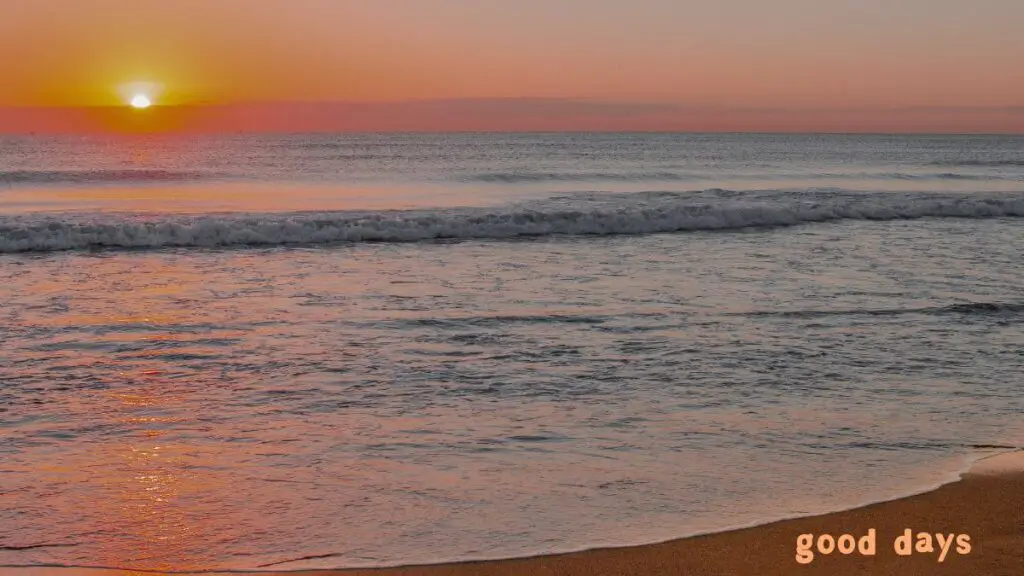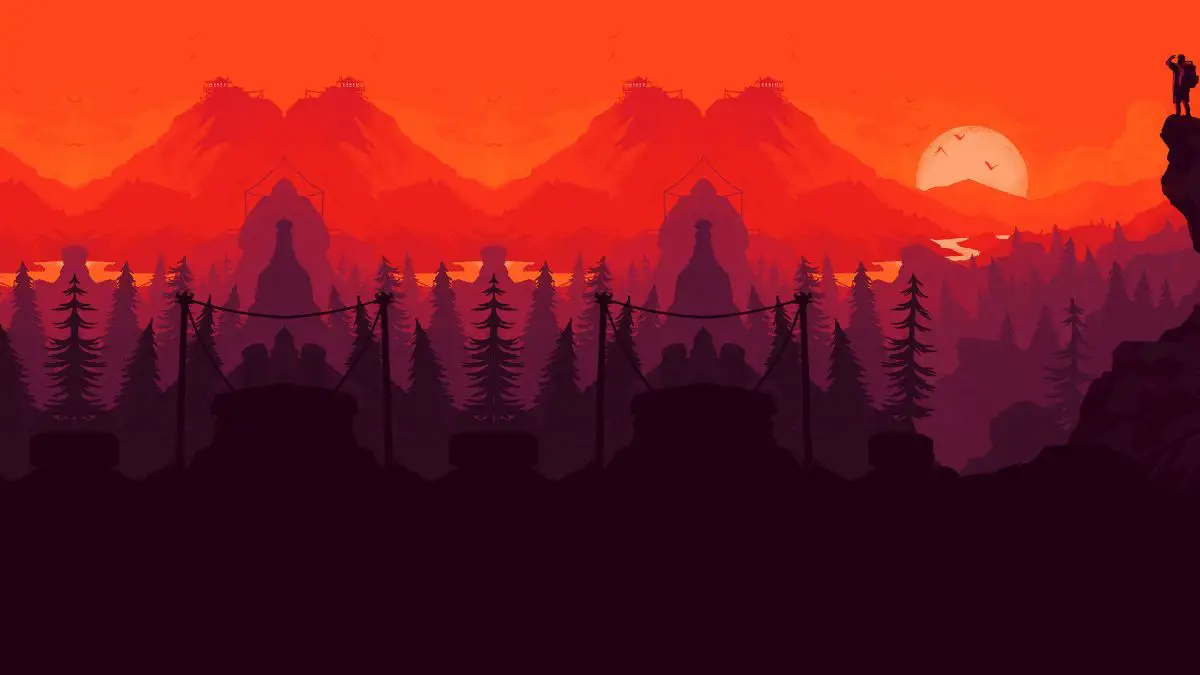As a nature enthusiast and a photographer, I have always been captivated by the mesmerizing beauty of sunset landscapes. There is something truly magical about witnessing the sun’s descent below the horizon, painting the sky with a breathtaking palette of colors.
In this article, I will explore capturing and appreciating sunset landscapes, providing insights, tips, and techniques to create your visual feast of nature’s masterpiece.
The Magic of Colors in Sunset Landscapes
One of the most enchanting aspects of sunset landscapes is the vibrant display of colors that unfold before our eyes. As the sun nears the horizon, the sky transforms into a canvas, showcasing a symphony of hues. Each sunset is a unique and awe-inspiring spectacle, from fiery oranges and intense reds to soft pinks and soothing purples. To truly capture the magic of these colors, it is essential to understand the role of lighting.
The Role of Lighting in Capturing Stunning Sunset Landscapes
Lighting plays a pivotal role in capturing stunning sunset landscapes. As the sun sets, the quality and direction of light change, creating a dramatic and ethereal atmosphere. The warm, golden light of the setting sun casts long shadows and adds depth to the landscape. It is during this magical hour, known as the “golden hour,” that photographers have the opportunity to create truly breathtaking images.
To make the most of this magical lighting, consider the position of the sun in relation to your subject. Experiment with different angles and compositions to find the perfect balance of light and shadow. Don’t hesitate to step out of your comfort zone and explore unconventional perspectives. The interplay between light and shadow can add depth and dimension to your sunset landscape photographs.
Composition Techniques for Capturing Captivating Sunset Landscapes
Capturing captivating sunset landscapes is not just about pointing your camera toward the setting sun. Composition plays a crucial role in creating visually appealing and impactful photographs. Here are a few composition techniques to consider:
Rule of Thirds: Divide your frame into a 3×3 grid and place the key elements of your composition along the gridlines or at their intersections.
Leading Lines: Utilize natural or artificial lines in the scene to guide the viewer’s eye toward the focal point of your image.
Foreground Interest: Incorporate elements in the foreground to add depth and create a sense of scale.
Symmetry and Reflections: Look for opportunities to capture symmetrical scenes or reflections in bodies of water, which will enhance the visual impact of your sunset landscapes.
Experiment with these techniques and find what works best for the scene you are capturing. Remember, rules are meant to be broken, so don’t be afraid to explore your unique style and perspective.

Equipment and Settings for Photographing Sunset Landscapes
It is essential to have the right equipment and settings to capture the true beauty of sunset landscapes. While professional gear can undoubtedly enhance the quality of your photographs, it is not a prerequisite for capturing stunning sunset landscapes. Here are some essential elements to consider:
Camera: Use a DSLR or mirrorless camera that allows for manual control over settings.
Lens: A wide-angle lens, such as a 24-70mm or 16-35mm, is ideal for capturing the expansive beauty of sunset landscapes.
Tripod: Invest in a sturdy tripod to keep your camera steady during long exposure shots.
Filters: Graduated neutral density filters can help balance the exposure between the bright sky and the darker foreground, ensuring a well-exposed image.
Regarding camera settings, shooting in RAW format will give you greater flexibility during post-processing. Set your aperture to a higher value (around f/8 to f/16) to ensure a considerable depth of field. Adjust your ISO and shutter speed accordingly to achieve the desired exposure. Remember, each sunset landscape is unique, so don’t be afraid to experiment with different settings to capture the mood and atmosphere of the scene.
Tips for Finding the Perfect Location for Sunset Landscapes
Finding the perfect location for capturing sunset landscapes requires research, intuition, and exploration. Here are some tips to help you find that magical spot:
Scout Locations: Research potential locations using online resources, guidebooks, or local recommendations. Look for places that offer exciting foreground elements, such as mountains, coastlines, or iconic landmarks.
Plan Ahead: Check the weather forecast to ensure clear skies and favorable conditions. Clouds can add drama to your sunset landscapes, but too many or too few can affect the overall mood of your photographs.
Timing is Key: Arrive at your chosen location well in advance to scout the area and set up your equipment. Keep an eye on the sun’s position and be prepared to capture the magic as it unfolds.
Finding the perfect location is just as rewarding as capturing the photograph. Embrace the adventure and let your passion for nature guide you to the most breathtaking sunset landscapes.

Editing and Enhancing Sunset Landscape Photos
Once you have captured your sunset landscape photographs, the editing process allows you to bring your vision to life and enhance the scene’s natural beauty. Here are some tips for editing and enhancing your sunset landscape photos:
White Balance: Adjust the white balance to achieve the desired color temperature and mood. Experiment with warmer or cooler tones to evoke different emotions.
Contrast and Clarity: Enhance the contrast and clarity of your image to make it more visually appealing. Be careful not to overdo it, as excessive adjustments can result in an unnatural look.
Graduated Filters: Use graduated filters to selectively adjust the exposure of the sky and foreground, balancing the overall exposure of your photograph.
Vibrance and Saturation: Increase the vibrance and saturation to make the colors of your sunset landscapes pop. However, be mindful of maintaining a natural and realistic look.
Remember, editing should be a tool to enhance the beauty of your sunset landscapes, not to alter the scene entirely. Use your creativity and intuition to achieve a result true to your vision and the emotional impact you wish to convey.
Showcase of Breathtaking Sunset Landscapes from Around the World
Let’s embark on a visual journey and explore some breathtaking sunset landscapes worldwide. From Bali’s tranquil beaches to Patagonia’s rugged mountains, each photograph encapsulates the unique beauty and emotion of nature’s masterpiece. Immerse yourself in the vibrant colors, serene reflections, and awe-inspiring compositions, and let these images ignite your creativity and appreciation for the beauty surrounding us.
The Emotional Impact of Sunset Landscapes
Sunset landscapes have a profound emotional impact on us. They evoke a sense of tranquility, awe, and wonder, reminding us of the beauty and fragility of our natural world. As we witness the sun’s descent and the sky’s transformation, we are reminded of the fleeting nature of time and the importance of cherishing each moment. Sunset landscapes can inspire, uplift, and connect us to something greater than ourselves.
Conclusion: Appreciating the Beauty of Nature’s Masterpiece
In our fast-paced and hectic world, it is essential to take a moment to appreciate the beauty surrounding us. Sunset landscapes offer a glimpse into nature’s extraordinary wonders, serving as a visual feast for our senses. Whether you are a photographer seeking to capture these moments or someone who enjoys witnessing the magic, let us cherish the breathtaking beauty of sunset landscapes and allow them to inspire and rejuvenate our souls.

